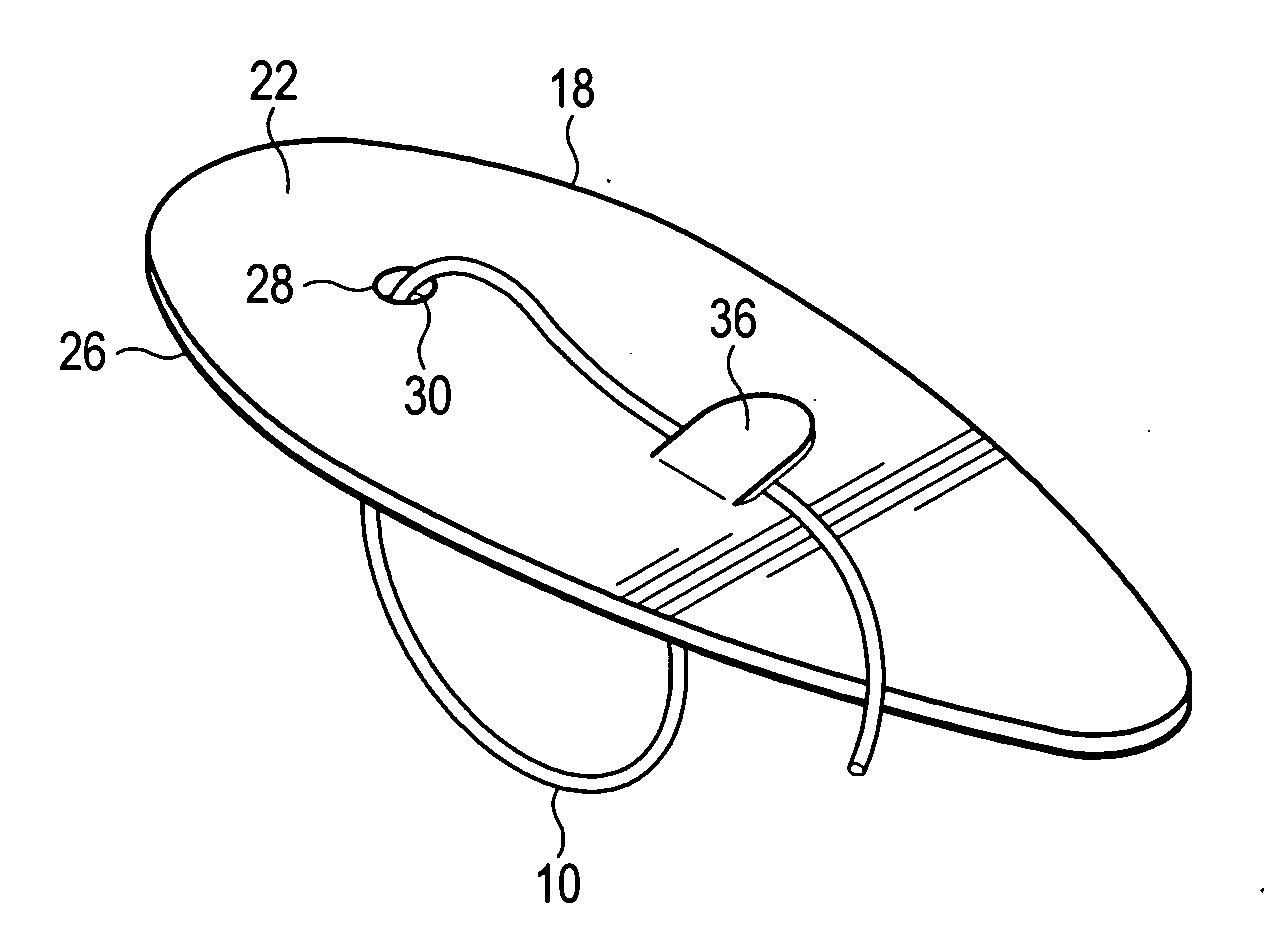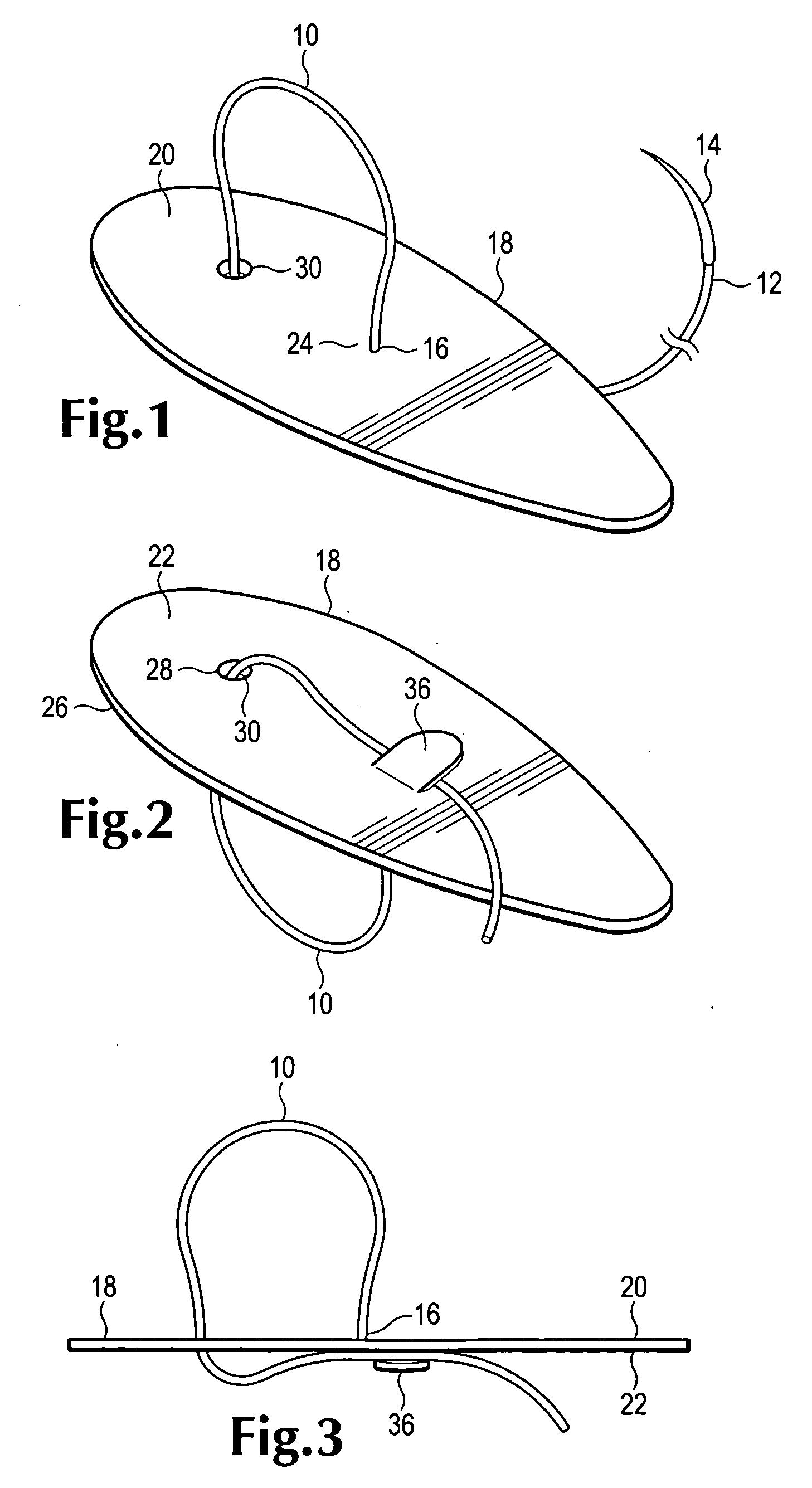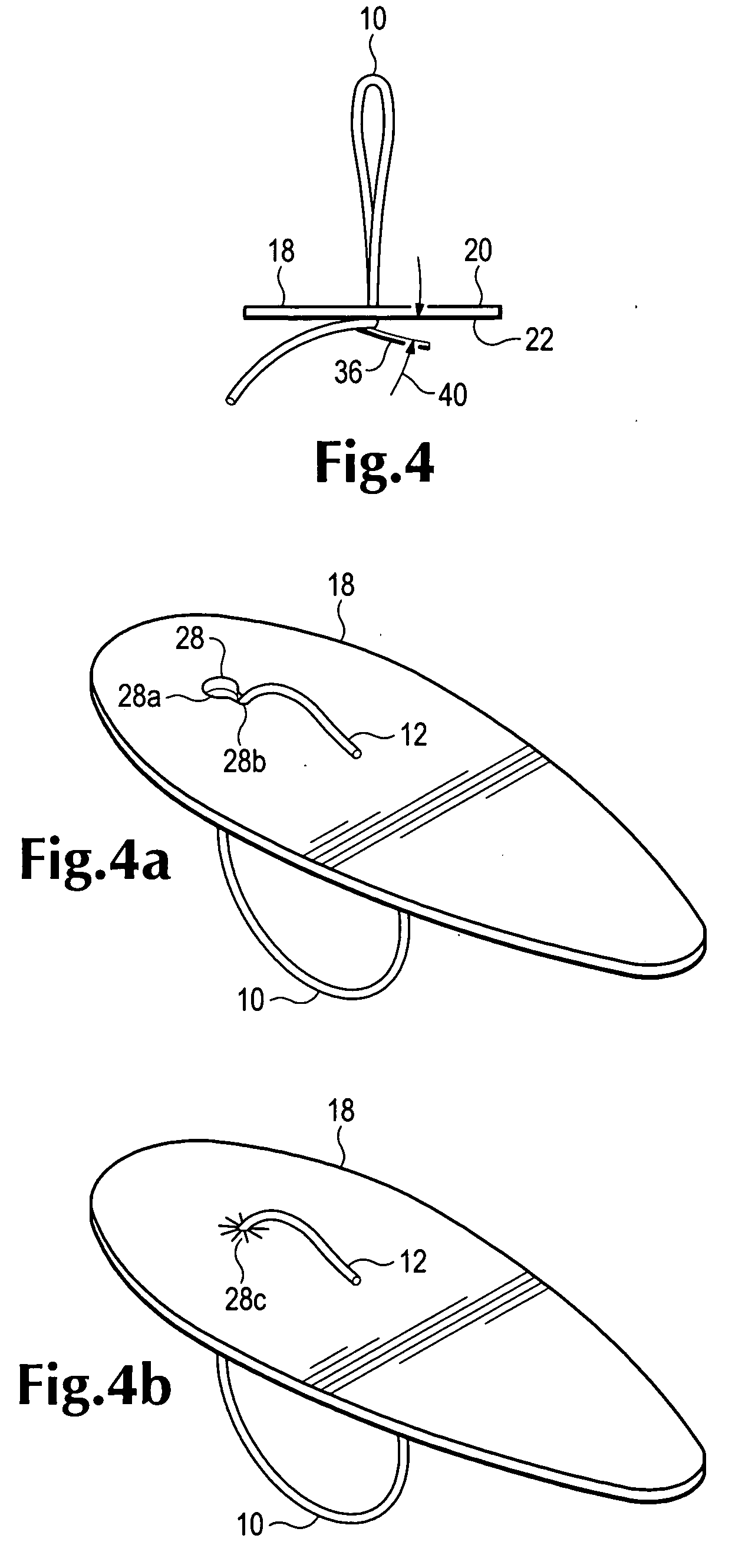Device for repositioning cartilage and method of use
a cartilage and cartilage technology, applied in the field of cartilage repositioning devices and methods, can solve the problems of cosmetic problems, inability to achieve aesthetic and functional success in many cases, and inability to achieve the effect of aesthetic and functional success
- Summary
- Abstract
- Description
- Claims
- Application Information
AI Technical Summary
Problems solved by technology
Method used
Image
Examples
Embodiment Construction
[0031]It is conventionally believed that the shape or position of cartilage cannot be modified without the addition of more cartilage, such as through a grafting procedure using cartilage from elsewhere in the body. Consequently, conventional alteration of the shape or position of the upper lateral cartilage in order to repair a compromised internal nasal valve involves either a nasal dilator which temporarily moves cartilage into a different position, but which change is reversed upon removal of the device, or a more permanent repair through a cartilage graft.
[0032]However, the inventor of the device and method disclosed herein was surprised to discover that the thin cartilage of the nasal envelope such as the upper lateral cartilage can heal into a different position without grafting if an opportunity for scar tissue development is provided and a dynamic device is used to reposition the cartilage and maintain the new position long enough for scar tissue to form. The inventor made ...
PUM
 Login to View More
Login to View More Abstract
Description
Claims
Application Information
 Login to View More
Login to View More - R&D
- Intellectual Property
- Life Sciences
- Materials
- Tech Scout
- Unparalleled Data Quality
- Higher Quality Content
- 60% Fewer Hallucinations
Browse by: Latest US Patents, China's latest patents, Technical Efficacy Thesaurus, Application Domain, Technology Topic, Popular Technical Reports.
© 2025 PatSnap. All rights reserved.Legal|Privacy policy|Modern Slavery Act Transparency Statement|Sitemap|About US| Contact US: help@patsnap.com



